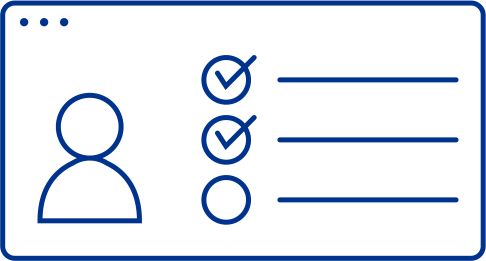It’s no secret that people are the foundation of every organization’s productivity. The workforce is not just a resource. It is the engine that powers growth, resilience, and competitive advantage. Whether in a small business or a large enterprise it is individuals supported by effective teams who deliver results, drive innovation, and shape the organization’s future. When leaders invest in their people and create the right conditions for them to thrive, productivity follows.
Yet, maximizing the potential of a workforce is complex. Productivity is not uniform across roles or departments. What is ‘productive’ for sales may not apply to IT or HR. So where to begin? Read on to explore strategies for how to empower your most valuable asset – your people.
What’s hindering impact
One of the biggest issues when we talk about workforce and productivity is methods of measurement. All too often organizations still measure productivity by time spent working, rather than assessing meaningful output. This focus on presenteeism can lead to disengagement, as teams fill their days with busy work that leaves them with no sense of purpose. The other side of the coin is no better. Folks who do great work with great efficiency are just rewarded with more work, leading to loss of motivation and eventual burn-out.
The other major obstacle is tool overload. New technologies are often introduced without retiring legacy systems, which can result in inefficiency and confusion. Employees may spend significant time navigating multiple platforms rather than focusing on productive work.
Role clarity and strategic alignment are also significant hurdles. When individuals don’t understand how their work connects to broader organizational goals, priorities become blurred and productivity suffers, resulting in lots of output but little impact. Ensuring people are in the right roles with the right skills is essential. Otherwise, even with new technology or tools, productivity won’t improve. Addressing these gaps through targeted workforce planning and skills development helps teams focus on work that truly drives organizational success.
Where to start
Before putting together a workforce productivity improvement plan, consider asking the following strategic questions about your organization and your people:
- Do we have a clear strategy as an organization? Do we have a clear view of how each individual role links to the achievement of that strategy? Is that clear to our people?
- Do we have the right people in the right roles? Do they have the right skills?
- What tools do we use? Are they all utilized to their full potential? Where are there opportunities to simplify our working environment?
- How motivated and engaged are our people? How do we reward our people to drive real productivity rather than ‘busyness’?
- What are the external influences that might affect our sector and shape their environment? How can we acknowledge these influences and adjust our strategy accordingly?
By addressing these questions, leaders can identify gaps, clarify priorities, and lay the groundwork for meaningful improvements.
What you can do – A productivity blueprint
In the next quarter, Canadian leaders can take the following targeted, measurable actions to improve how their people work and deliver results:
- Define productivity: Articulate what productivity means at a business unit level. Define measurable outcomes that are relevant to the work being completed by each team. Where possible, these should roll up to an organizational view of productivity.
- Set or reestablish clear team outcomes, that are measurable and aligned with organizational strategy: Meet with team leads to define 2–3 measurable priorities for the quarter (e.g. “Increase client satisfaction scores by 10%”). Create alignment on what work is most valuable to the organization. Share these with all team members and review progress every two weeks.
- Conduct a tools audit: List all tools used by each team and their functionality. Survey employees to identify redundancies, then remove at least one unnecessary tool or process per team. Provide a simple guide for which tools to use for key tasks.
- Establish dedicated time for learning: Block one hour per week for employees to try new tools (such as AI platforms) and share feedback. Track participation and note which tools improve workflows.
- Review roles and skills alignment: Map current roles to needed skills. Identify one gap per team and address it through training, mentorship, or hiring. Reassign tasks so skilled people focus on high-value productive work.
- Revise incentives to reward collaboration and quality: Update performance reviews to include at least one team-based metric. Recognize employees who help others or improve processes, not just those who complete the most tasks.
- Monitor for unintended consequences and adjust: Review productivity data monthly. If a metric leads to negative behaviours (like rushed work), revise it and communicate the change.
By implementing these specific actions, leaders can create a more focused, efficient, and engaged environment, empowering people to deliver meaningful results and continuously improve how work gets done.
What NOT to do
Avoid common traps that stall workforce productivity:
- Don’t equate 'busyness' or physical presence with productivity. Avoid rewarding presenteeism.
- Avoid adding new tools without first streamlining or integrating existing systems.
- Don’t miss the chance to reward behaviours that drive desired outcomes. Productivity improves when you recognize and reward the behaviours that drive collaboration and meaningful impact. See the work you want to see more of? Reward it.
- Steer clear of micromanagement. Encourage people’s autonomy to innovate and learn.
- Avoid introducing technology without proper integration and training. This can reduce, not improve, productivity.
In summary
Unlocking true workforce productivity means focusing on the results your people deliver, not just the hours they put in. Using meaningful metrics, streamlining tools, and fostering a culture of collaboration and quality are essential.
Leaders play a key role in helping individuals and teams understand what success looks like and in providing the support they need to achieve it. By moving away from outdated practices and prioritizing what truly drives value, Canadian organizations can unlock the full potential of their workforce.
How KPMG can help
KPMG Canada works with organizations to clarify strategy, align talent, and optimize the workforce’s use of technology. We assist leaders in workforce planning, organizational redesign including identifying gaps in roles and skills in the age of AI, simplifying work environments, and designing incentives that promote collaboration and business value.
Whether automating manual processes, reimagining your workforce for AI, supporting change management for technology adoption, or helping teams focus on outcomes, our approach is always practical and tailored to the unique needs of Canadian businesses.
Insights and resources
Connect with us
Stay up to date with what matters to you
Gain access to personalized content based on your interests by signing up today
Connect with us
- Find office locations kpmg.findOfficeLocations
- kpmg.emailUs
- Social media @ KPMG kpmg.socialMedia




